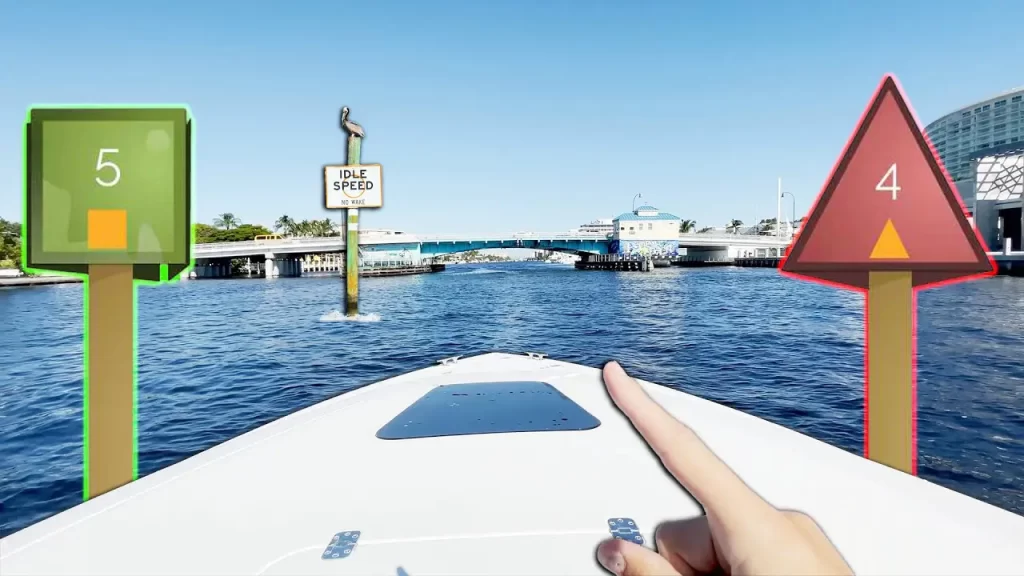What do the Red and Green markers indicate?

Navigating the Waterways with Confidence: Demystifying Red and Green Channel Markers
Venturing onto the water opens a world of exploration and adventure. But for boaters, especially those new to navigating waterways, encountering red and green markers can be a source of confusion. Understanding the meaning and purpose of these markers is crucial for safe and confident navigation. This comprehensive guide delves into the world of channel markers, explaining what the red and green markers indicate and empowering you to navigate with clarity.
Unveiling the Language of the Water: A Diversification of Aids to Navigation
Channel markers, also known as aids to navigation, are a system of visual signals strategically placed on waterways to guide boaters through safe passages. These markers come in various shapes, sizes, and colors, but the most fundamental distinction lies in their color scheme: red and green.
The Red-Right Returning Rule: A Universal Navigation Mnemonic
Understanding the red-right returning rule is paramount for safe navigation using red and green channel markers. This simple yet effective mnemonic provides a clear guideline:
- Red markers are typically positioned on the right side of the channel when returning from open water to a harbor, inlet, or inland waterway.
- Green markers are typically positioned on the left side of the channel when returning from open water to a harbor, inlet, or inland waterway.
By adhering to this rule, boaters can navigate channels confidently, knowing they’re staying within the designated safe passage.
Important Note: The red-right returning rule is a general guideline and may not apply universally. In some specific locations, channel markers might be reversed. Always consult official navigation charts and local regulations for the specific waterway you’re navigating.
Beyond Red and Green: Exploring the Diversification of Channel Markers
While red and green markers form the foundation of channel marking systems, additional variations exist, each conveying specific information:
- Red and Green Buoys: These floating markers function similarly to fixed channel markers, with red buoys typically located on the right side of the channel and green buys on the left.
- Yellow Buoys: These markers indicate caution and often warn of hazards, obstructions, or restricted areas.
- Black Buys: These markers typically denote safe water on both sides and might be used to mark isolation zones or spoil areas.
- Lateral Daybeacons: These diamond-shaped markers function similarly to fixed channel markers but are typically used during daylight hours.
Understanding the variations in channel marker color and design allows boaters to navigate waterways with a heightened sense of awareness and safety.
Visual Learning Through High-Quality Images:
Including high-quality images of various channel markers (red and green markers, buoys, daybeacons) will significantly enhance the SEO value and user engagement with your content. Consider creating infographics summarizing the red-right returning rule and the different types of channel markers.
Frequently Asked Questions (FAQ): Charting a Course Through Your Navigation Concerns
Now that you’ve embarked on a journey to understand red and green channel markers, let’s address some frequently asked questions (FAQs) to ensure smooth sailing:
-
Q: What if I encounter a channel with only red or green markers?
- A: In some instances, channels might be marked with only red or green markers on one side. In such cases, the markers usually indicate the safe side of the channel, and boaters should navigate on the opposite side of the markers. Always consult a navigation chart for specific channel configurations.
-
Q: Do I always need to stay to the right side of the channel?
- A: The red-right returning rule applies primarily to returning from open water. In some cases, channels might have designated traffic lanes with specific rules. Always prioritize following the designated traffic flow and any signage present on the waterway.
-
Q: What should I do if I encounter a damaged or missing channel marker?
- A: Proceed with extreme caution. Navigate slowly and consult your navigation chart for alternative markers or channel boundaries. Report any damaged or missing markers to the appropriate authorities.
-
Q: Are there any electronic navigation aids that complement channel markers?
- A: Absolutely! Global Positioning Systems (GPS) and electronic chartplotters are valuable tools for navigation. However, never rely solely on electronic aids. Always use visual aids like channel markers in conjunction with electronic navigation systems.
-
Q: Where can I find more information about channel markers and navigation rules?
- A: Several resources can enhance your navigation knowledge. Consult official navigation charts for specific waterways, enroll in boating safety courses offered by your local coast guard or boating association, and refer to navigation rule publications.



